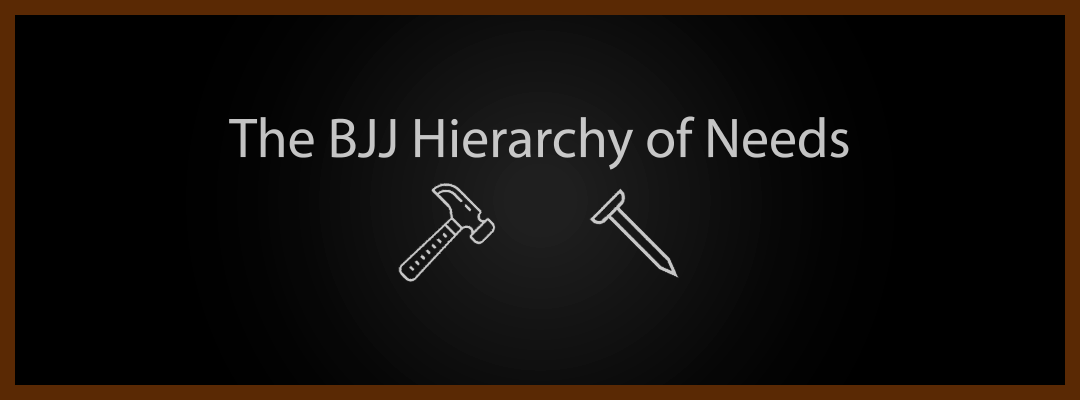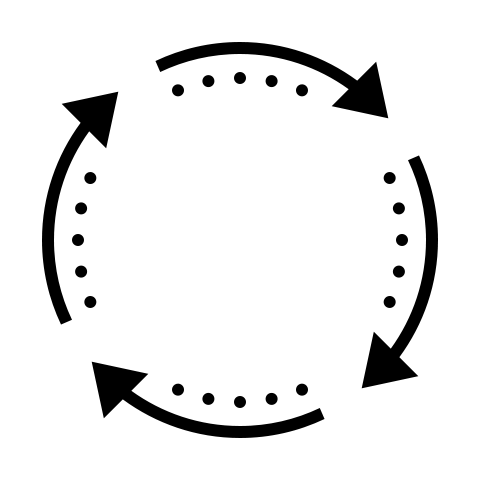
BJJ Hierarchy of Needs

In an ideal world, we're always winning and always on top - but this isn't an ideal world. Everyone that trains Jiu Jitsu faces adversity. We all need to learn how to deal with it and overcome it. That's where the "BJJ Hierarchy of Needs" comes in. The model is simple - make sure your lower needs are met prior to advancing up the ladder!
This hierarchy has similarities with Maslow’s hierarchy of needs – there are five levels in both and needs at lower levels should be met prior to needs at higher levels. Unlike Maslow’s hierarchy, the BJJ hierarchy of needs is a prescriptive approach to BJJ and submission grappling.
The BJJ Hierarchy of Needs (HON) is useful at every stage of a BJJ match in describing what you need to do next, based upon what need is not being totally met. If a need is already being met, move on to meeting the next higher need. Keep reading to see more about how to use the HON model; we’ll go through it need by need to detail how to successfully use it.
More...
The Need to Survive

At the bottom rung of the HON is the need to survive. If a grappler is failing to meet this need, he needs to immediately address it. For example, a grappler finds himself mounted and stuck in a cross-collar choke – this grappler is not fully meeting his need to survive. He needs to spend all his efforts on nullifying the attack (i.e. surviving). Once he successfully breaks the grips of the choke he can work on the meeting the next higher need.
The Need to Neutralize
Continuing from the example above, once an escape has been executed, the grappler needs to neutralize the offense of his opponent. In this case, the grappler needs to protect his neck and arms and execute an escape from mount. Our hero here attempts an upa escape but it fails. Fortunately, he still makes enough space to recover guard. He then immediately secures his grips and breaks his opponent’s posture. He has now effectively met his need to neutralize his opponent. Time to move up the ladder.
The Need to Reverse
Our hero is still on the bottom, stuck in guard, and defending guard passes. He has a need to reverse. He gets his grips and sets up a sweep. The sweep is successful, but he ends up on top in half guard. This is a definite improvement, but he now needs to meet his next need – the need to dominate.
The Need to Dominate
Our hero has landed in top half guard and he needs to pass the guard, so he can get to a dominant pin or control position. A common mistake for a white belt here is to begin attacking from top half guard. But every BJJ professor and the HON want him to pass the guard first. With this in mind, our hero gets his grips and executes a beautiful knee slice pass to side mount. He settles in to side mount and drives hard into his opponent to maximize his pressure. He has satisfied his need to dominate.
The Need to Submit
Our hero has satisfied all the needs underneath the need to submit. It is now appropriate for him to attempt submissions. He also has the option to transition to other dominant pinning or control positions such as knee-on-belly, mount, or back mount.
Contingencies
Of course, the grappler in our example is fighting a real human being that is also trying to win so setbacks are to be expected. Our protagonist may get to the top mount position and then get upa’d off. He went from the top of the HON down to the middle. He now must climb back up the HON by reversing and dominating before he starts attempting to meet his need to submit.
The Normal Fight Flow
We started our discussion of the HON with an example where the protagonist was stuck in a bad position and failing to meet any of his needs. The fight didn’t start there though. That fight, as most fights do, started in a neutral position. The bottom three needs are already met at the beginning of most matches – all that needs to be done to win is to get into a dominant position and submit. (Side note: this is why it’s so important to develop a strong standup game.)

A competitive fight will go back and forth. Grapplers will move up and down the HON in a fight like this; this is normal. A mature grappler will intuitively climb every rung of the HON ladder in order. He won’t attempt to skip multiple rungs. Attempts to skip rungs of the ladder generally induce cringes from instructors as they coach their athletes. This is like attempting to cross-collar choke an opponent from inside their guard. It’s not the time or place and it won’t work against a remotely competent grappler.
Conclusion
The BJJ Hierarchy of Needs (HON) is simply a model of grappling to prescribe what need you should address next according to what needs you already have met. It does not prescribe the techniques you use to move up the ladder. The techniques you use to meet your needs are contingent on your opponent and your skillset. Spend some time thinking about this model and internalize it. You won’t regret it!
